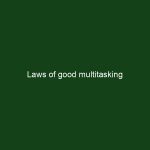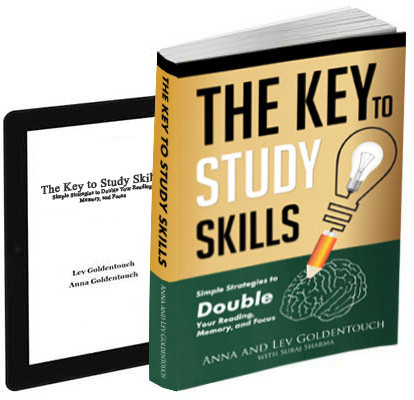We often proclaim that our students need to find their own way. What do we mean and what is the main obstacle? People are different. This is what makes us more interesting and valuable. Jewish wisdom proclaims “He who saves one soul it’s as if he saved the entire world”. Yet we are continuously conditioned …
KeyToStudy Offers:
Memory, Speedreading, and Analysis
KeyToStudy Overview:
Memory, Speedreading, and Analysis
ProlificFocus Overview:
Productivity, Motivation, and Projects
ProlificFocus Offers:
Productivity, Motivation, and Projects
Marker dictionary
Occasionally you will need to make a marker dictionary. This method is typically required for medical and legal students, because the terms they use may be so abstract and complex that no reasonable markers can be created spontaneously. To some extent, a large quantity of number memorization (via major system/PAO) or memorization of foreign words …
Compound markers
If you learnt how to generate visual markers and how to increase and control your visual eye span, your reading speed could easily be around 800 wpm. If you want to read vaster and understand more, perhaps you need some other sort of training. This training is advanced and it is not a part of …
Dreaming and memory
Long term memory is closely related to sleep. When we sleep our short term memory is basically copied into our long term memory. If somebody is not sleeping enough trying to prepare for exam, this a huge mistake. After several days everything will be forgotten and days of practice lost. There are ways of improving …
Source of genius
Is being a genius something we get at birth, something we acquire by hard work or some luck that comes to people who are prepaired for it? Can someone willingly become a genius? There is simply not enough statistical evidence to decide one way or another. Take this article for example. From looking at it …
Comfort zone
Anna has been pushing me out of my comfort zone since we met for 10 years now. She claimed it would help my personal growth. There are actual articles backing up this idea. Let us try to think about it. Our comfort zone typically includes things we feel comfortable doing: things we do automatically, things …
How to do “life”
Quite often our students ask me for advice regarding juggling various tasks. Recently I read this article on psychologytoday and it made me think.To which extent can we gamify our lives and “win” as a result? Life is hard for everybody. Each of us gets a different bucket of skills and challenges, as we get …
Study group collaboration secrets
Study groups are a great way to learn new things and train the skills with other people. Study groups are also notoriously unproductive, unless they function properly. This article outlines some rules for successful collaboration, which we would like to explore. Respect diversity. A typical study group will be very diversified. There will be charismatic …
Laws of good multitasking
How do we have more than 24 hours a day? We multitask, of cause. Only 2% of populace are supertaskers and can multitask well. Being a superlearner, is definitely a good stepping stone into becoming a supertasker. There are not many guides regarding supertasker training. Probably this article will be useful for you. While I …
Team building – rebels needed
When we started our mastermind project, accountability group was one of our key offerings. How did we build our groups? Based on common time zone, interests etc. And we failed: the groups did not become magnets of learning and motivation generators. True team-building is a complex task, which we cannot handle from our mail accounts. …











